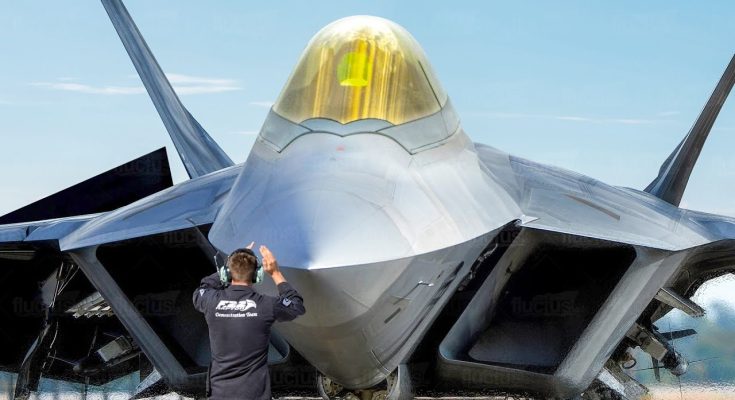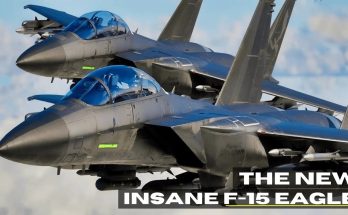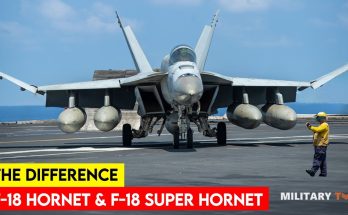The F-22 Raptor, one of the most advanced stealth fighters in the world, is renowned not only for its exceptional combat capabilities but also for its incredible aerobatic demonstrations. Designed primarily for air superiority, the F-22 was introduced by Lockheed Martin as a fifth-generation fighter jet that incorporates stealth, speed, agility, and cutting-edge avionics. While the F-22 excels in combat, its aerobatic performances at airshows demonstrate its unbelievable agility and advanced flight dynamics, which often leave spectators in awe.
The F-22 Raptor: The Ultimate Air Superiority Fighter
The F-22 was developed to dominate the skies in air-to-air combat. It combines supercruise (the ability to fly at supersonic speeds without using afterburners), stealth technology to evade radar detection, advanced avionics, and exceptional maneuverability. Its unique design, with its angular fuselage and wide wings, not only serves its stealthy purpose but also enhances its aerodynamic performance, giving it the ability to perform extreme maneuvers at high speeds.
Unlike previous generations of fighters, which focused primarily on either speed or maneuverability, the F-22 blends these features seamlessly. Its fly-by-wire system ensures that the aircraft responds quickly and precisely to pilot inputs, while the thrust vectoring nozzles (allowing for controlled deflection of engine thrust) give it unmatched agility in the air.
Amazing Aerobatics: Showcasing Extreme Agility
When the F-22 takes to the skies for an aerobatic demonstration, the performance is nothing short of stunning. Demonstrating both its maneuverability and superior control, the Raptor performs a series of maneuvers that highlight its ability to perform at both high and low speeds, with incredible precision.
Some of the most impressive aerobatic maneuvers seen in F-22 demos include:
1. High-Speed Low Pass
One of the most exciting parts of an F-22 demo is the high-speed low pass. The Raptor flies just above the ground, sometimes reaching speeds near Mach 1, creating a thunderous sonic boom as it tears through the air. This maneuver showcases the F-22’s supersonic capabilities and the raw power of its engines.
2. The “Tail Slide”
One of the more dramatic maneuvers, the tail slide demonstrates the F-22’s extreme agility. During this maneuver, the aircraft enters a controlled stall before rapidly sliding backward while maintaining its position in the sky. The fighter then reverses its direction to fly forward again, showing its ability to regain control after a near-zero airspeed situation. This maneuver highlights the Raptor’s superior control systems and the pilot’s ability to harness the aircraft’s power.
3. Cobra Maneuver
The Cobra maneuver, also known as the Pugachev’s Cobra, is a high-angle pitch that brings the aircraft almost vertically to a near stall, before the fighter nose dips and then accelerates back to forward flight. The F-22’s thrust vectoring engines allow it to maintain this dramatic maneuver, even in the most extreme positions. It’s an incredibly rare move in modern aviation and is one of the more breathtaking demonstrations of the fighter’s aerodynamic superiority.
4. Vertical Climb
The F-22’s vertical climb is a true spectacle, showcasing the aircraft’s raw power and thrust-to-weight ratio. After pulling out of a high-speed pass, the pilot will push the throttle to its limit, sending the fighter straight up into the sky. Within moments, the F-22 can reach altitudes that would take traditional fighters several minutes to achieve. This maneuver demonstrates its superior thrust and aerodynamic design that allows it to climb without sacrificing speed or control.
Stealth and Performance: A Perfect Combination
While aerobatic demonstrations focus on maneuverability and flight dynamics, the F-22’s stealth capabilities are always at the forefront of its design. The Raptor’s stealth allows it to evade enemy radar while still being able to perform extreme maneuvers that are difficult for adversaries to track or counter. During a typical airshow, the F-22 can operate in a controlled environment while showing off its speed, agility, and radar-evading capabilities in perfect synchronization.
The fact that a fighter jet with stealth technology—designed for air dominance—can perform such intricate aerobatic feats is a testament to the advanced engineering that went into the development of the F-22. Unlike older fighter jets, which required trade-offs between speed and maneuverability, the F-22 excels in both arenas, and its demos highlight the very essence of what makes the aircraft so extraordinary.
Conclusion
The F-22 Raptor aerobatic demonstration is a breathtaking showcase of cutting-edge technology and pilot skill. From high-speed passes to complex maneuvers like the tail slide and Cobra, the F-22 demonstrates not just its speed and agility but also the tremendous advancements in aviation technology. The combination of stealth, supercruise, and maneuverability makes the F-22 not just a formidable combat asset but a symbol of air superiority. Watching this incredible fighter in action is a reminder of the power and precision that modern fighter jets are capable of, and why the F-22 remains one of the most elite and awe-inspiring aircraft in the world.



